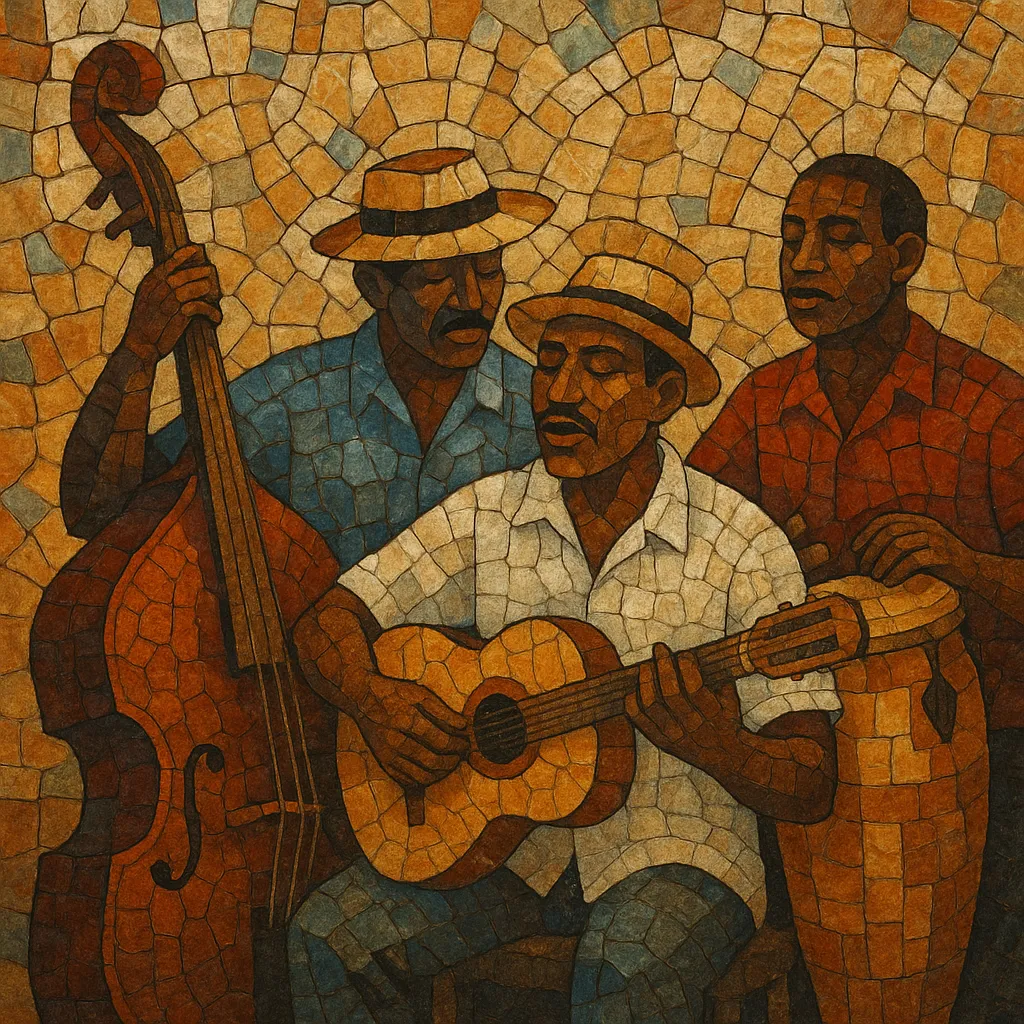Son cubano is a foundational Cuban genre that fuses Spanish-derived song forms and harmony with Afro-Cuban rhythms and percussion. Born in eastern Cuba (Oriente) and crystallized in Havana in the 1910s–1920s, it became the backbone of much of 20th‑century Latin popular music.
Typical ensembles began as sextetos (tres, guitar, bongó, maracas, claves, and bass or marímbula) and later evolved into septetos with trumpet. Conjunto formats in the 1940s added piano, congas, and multiple horns. The music rides a son clave (in 3‑2 or 2‑3 orientation), features interlocking tres guajeos, a walking/tumbao bass that anticipates the downbeat, and call‑and‑response vocals in the montuno section. Harmonically it is rooted in I–IV–V with bluesy dominant sevenths and occasional secondary dominants. Lyrically it balances romance, everyday life, and streetwise wit, always aimed at dancing and social gathering.
Son cubano emerged in eastern Cuba (Santiago de Cuba and the Oriente region) from the late 19th century as rural musicians blended Spanish canción/trova, guitar practices, and décima poetry with Afro‑Cuban rhythms and dance traditions related to rumba and other African‑derived genres. Early local precursors include changüí and nengón (in Guantánamo), which supplied the tres/groove concept and call‑and‑response vocal practice.
By the 1910s–1920s, son traveled to Havana with migrant musicians, where small sextetos standardized instrumentation: tres, guitar, bongó, maracas, claves, and bass/marímbula. Sexteto Habanero (founded 1918) helped codify the style, while Septeto Nacional de Ignacio Piñeiro (founded 1927) added trumpet, creating the septeto format and projecting son onto national radio, records, and dance floors. The verse–montuno structure, son clave (3–2/2–3), and catchy coro–pregón exchanges became hallmarks.
As recording and urban nightlife expanded, son interacted with danzón, guaracha, and bolero. Arsenio Rodríguez modernized son in the 1940s by forming the conjunto: adding conga, piano, and a horn section, deepening the tumbao, and extending montunos. His innovations led directly to son montuno’s harder swing and to the rhythmic and arranging practices that would fertilize mambo, Latin jazz, and later salsa.
The son sensibility pervaded Cuban music in the 1950s alongside mambo and the newborn cha‑cha‑chá. After the Cuban Revolution, diasporic exchanges and New York’s pan‑Latin scene reframed son’s vocabulary into salsa, driven by Puerto Rican, Cuban, and Nuyorican musicians and labels like Fania. Meanwhile, conjuntos in Cuba (e.g., Conjunto Chappottín) maintained and evolved the tradition.
The 1990s Buena Vista Social Club project sparked a global revival of classic son aesthetics, bringing veteran soneros to international stages. Today, traditional septetos and conjuntos coexist with modern Cuban styles (songo, timba) that still reference son’s clave logic, tumbao language, and montuno energy. Son remains a living dance music and a core influence across the Latin music spectrum.


